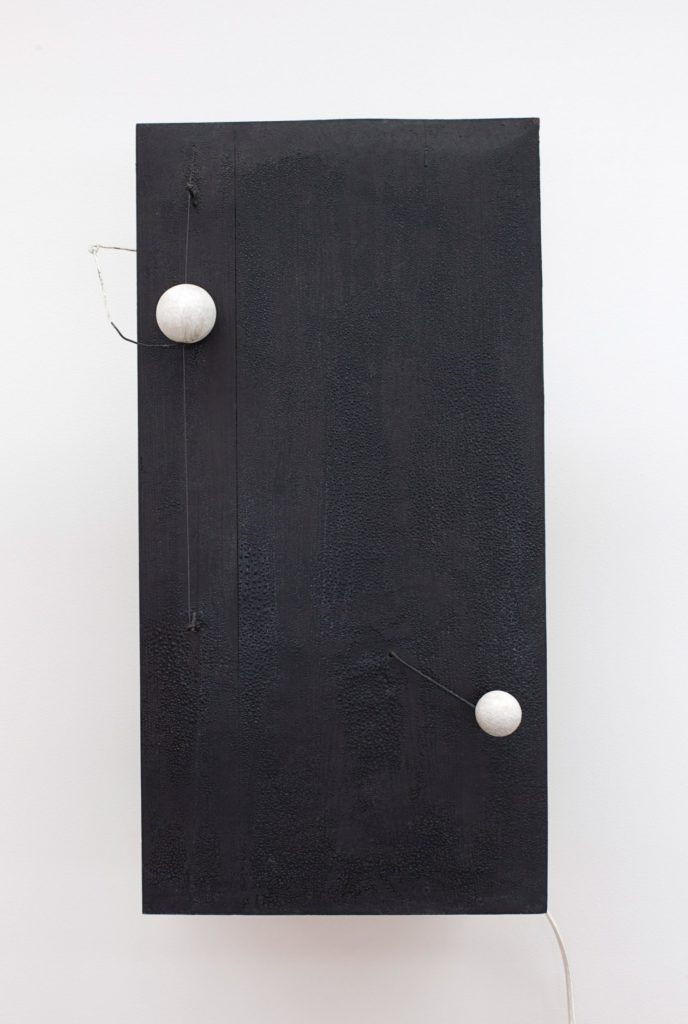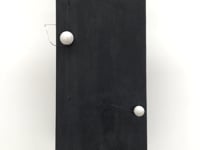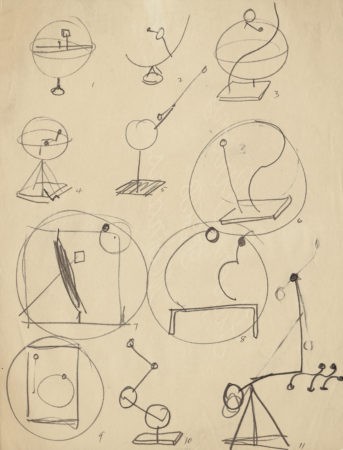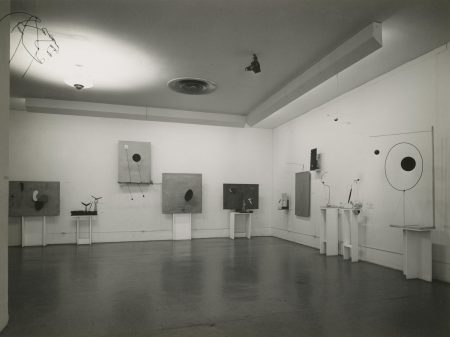






![Untitled (double-sided drawing) [recto] (1943)](https://calder.org/wp-content/uploads/historical-photos/Untitled-double-sided-drawing-recto-1943-450x327.jpg)


The Museum of Modern Art, New York. Alexander Calder: Sculptures and Constructions. 29 September 1943–16 January 1944.
Solo ExhibitionMusée National d’Art Moderne, Centre Georges Pompidou, Paris. Alexander Calder: les années parisiennes 1926–1933. 18 March–20 July 2009. Originated from the Whitney Museum of American Art, New York.
Solo ExhibitionTate Modern, London. Alexander Calder: Performing Sculpture. 11 November 2015–3 April 2016.
Solo ExhibitionFondation Beyeler, Riehen/Basel. Alexander Calder & Fischli/Weiss. 29 May–4 September 2016.
Group ExhibitionWhitney Museum of American Art, New York. Calder: Hypermobility. 9 June–23 October 2017.
Solo ExhibitionBefore a group of reporters visiting his exhibition at Julien Levy Gallery, Calder demonstrates the motion in Two Spheres. This has no utility and no meaning. It is simply beautiful. It has a great emotional effect if you understand it. Of course if it meant anything it
would be easier to understand, but it would not be worthwhile.
Following a visit in October of 1930 to Piet Mondrian’s studio, where he was impressed by the environmental installation, Calder made his first wholly abstract compositions and invented the kinetic sculpture now known as the mobile. Coined for these works by Marcel Duchamp in 1931, the word “mobile” refers to both “motion” and “motive” in French. He also created stationary abstract works that Jean Arp dubbed “stabiles.”